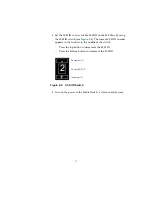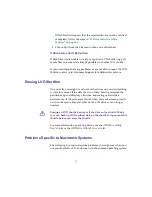
48
This chapter provides the following sections:
•
Managing LVD Shuttles on Windows 2000 Systems
•
Managing LVD Shuttles on Macintosh Systems
•
•
Managing LVD Shuttles on Windows 2000 Systems
The Windows 2000 operating system allows you to create multiple
partitions or logical drive assignments as a way to manage projects
and files. You can partition your drive as one large partition or
multiple partitions varying in size. Each partition is assigned a drive
letter.
The Windows 2000 operating system defines two types of disk drives:
•
Basic
disk drives allow disks to be divided into partitions. This
type of drive is normally used for standalone disk drives in the
Windows 2000 operating system.
•
Dynamic
disk drives allow disks to be divided into volumes. Disk
drives must be dynamic if you want to stripe, mirror, or use disk
drives in the RAID style. Avid supports the use of dynamic disk
drives when you need to create a stripe volume on your
Windows 2000 system.
To use your LVD shuttles on a Windows 2000 system, you need to
format and partition them properly. Once this has been accomplished,
you need to keep your LVD shuttles in peak operating condition by
performing maintenance operations and checks on a regular basis. For
more information, see
“Diagnostic Utilities” on page 64
The Windows 2000 operating system contains a disk-checking feature
in the Properties section of each drive. For information about how to
use this feature, see the Microsoft Windows 2000 documentation.
















































